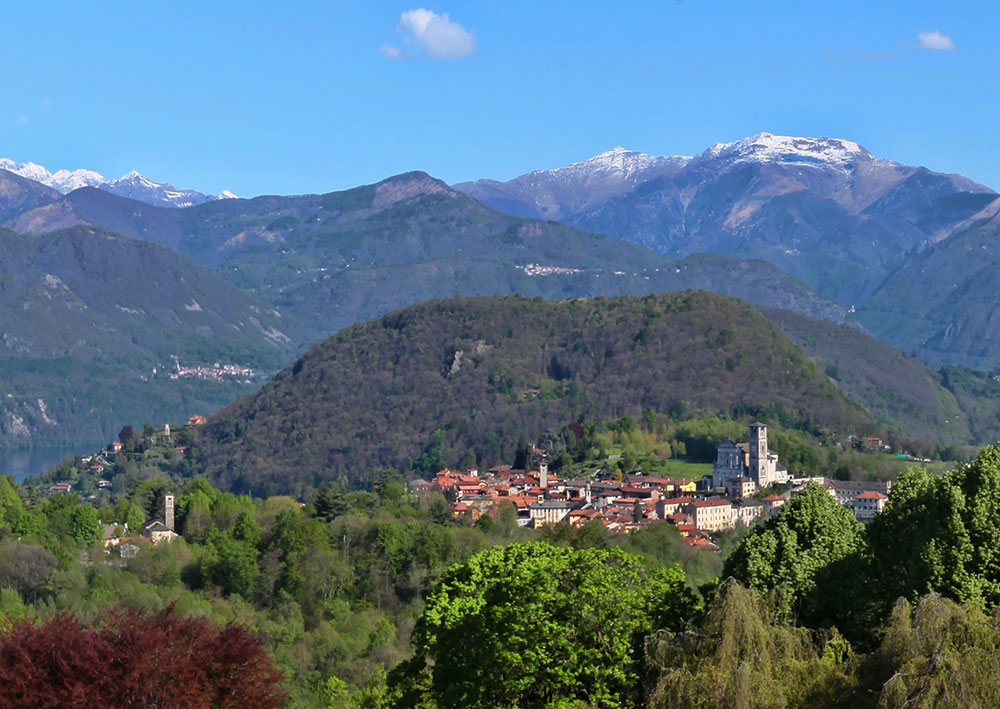
Address
Miasino
GPS
45.801456020402, 8.4301829338074
The village of Miasino
The charming village of Miasino is located on the eastern shore of Lake Orta. It has been enriched with splendid palaces since the 17th century. Among these, the most famous building is certainly Villa Nigra. It is located in the historic center of the village: its oldest part, dating back to the end of the 16th century, overlooks the central square.
The 17th-century building is characterized by a five-bay loggia, with frescoed walls that overlook the courtyard and frame the openings of the villa, creating particular optical effects.
In the mid-19th century, the well-known architect Carlo Nigra took care of the new arrangement of the residence.
The garden extends towards the south on a slight slope. The villa can be visited only on the occasion of particular cultural events.
One of the most significant monuments of Miasino is the Church of San Rocco, located on the upper part of the village with a splendid view of the lake. The name of San Rocco, the patron saint against the plague, was chosen for the ancient Romanesque church that was rebuilt from scratch starting in 1627 based on a design by the Milanese architect Francesco Maria Riccini. The reconstruction coincided with the terrible plague that Manzoni wrote about in “The Betrothed”. Inside, it features Baroque-style decorations and frescoes. The church’s façade, of classical style, remained unfinished for centuries and was completed only in 1933 by Carlo Nigra.
Parish Church of San Rocco
The name of San Rocco, the patron saint against the plague, was chosen for the ancient Romanesque church that, not surviving beyond the 17th century, was rebuilt from scratch starting in 1627 based on a design by the Milanese architect Francesco Maria Riccini. The reconstruction coincided with the terrible plague that Manzoni wrote about in “The Betrothed”.
The church’s facade, of classical imprint, remained unfinished for centuries and was completed only in 1933 by Carlo Nigra, an architect from Miasino by adoption. The church, consecrated in 1648 by the Novara archbishop Antonio Tornielli, is in Baroque style inside. It is a truly unique monument, of surprising elegance.
Stuccoes, gilding, frescoes and paintings on canvas decorate this church which, with its 45 m in length and 27 m in width, is among the largest in the entire Novara area. The Baroque high altar in polychrome marble, chiseled bronzes from the 17th century, the choir with wooden stalls, the baptistery are all valuable works. After many years of abandonment, the church has returned to present itself in all its baroque beauty thanks to the efforts of the Canons Regular of Premonstratensi who arrived in 1997 and of the archpriest Primo Cologni who in about ten years managed to restore the church as much as possible to its original state.
There are many important artists and craftsmen who collaborated in the creation of this artistic heritage:
Giovanni Battista Cantaluppi, Carlo Cane da Gallarate, Federico Bianchi, Giulio Cesare Procaccini, Giuseppe Zanatta, Giuseppe Nuvolone, Giorgio Bonola di Corconio, Andrea Lanzani, Stefano Maria Legnano known as Legnanino
